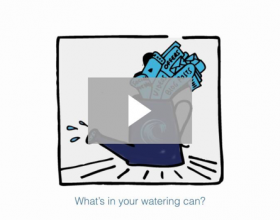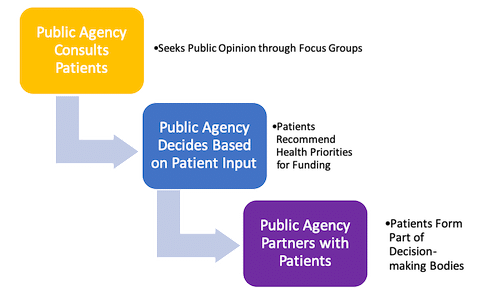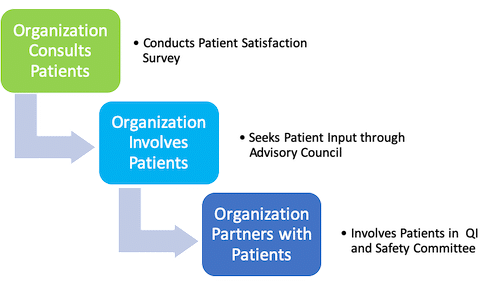The Different Types of SEO for Digital Marketing Success
Search engine optimization, or SEO, is one of the most powerful ways to attract visitors to your business website. SEO should be a cornerstone of your digital marketing plan. So for business owners, we’ve created our All About SEO series to guide you through it. Last week, we covered the SEO essentials for you. And today we’ll talk about the types of SEO, why they matter, and what you need to do to grow your site’s traffic.
The Three Types of SEO
The types of SEO are the three primary things search algorithms consider when figuring out where your site should rank in a search. But they’re all critical because they provide the same thing: a way for your site visitors and search engines to understand and navigate your site.
1. On-Page SEO
This is the most basic form of SEO and the one you can control most easily.
On-page SEO refers, simply, to the elements search engines consider on your web pages. Your content, like the pages of your website and your blog posts, is the biggest element of your on-page SEO. On-page SEO is a great place to start optimizing your site because it benefits both your site users and your search engine rankings.
Content
What’s the best way to attract visitors to your site and make them stay?
Writing really excellent, informative, engaging content. In the old days of SEO, stuffing as many keywords as possible into a page was the way to get results. Search engines rank your on-page content for engagement by measuring the amount of time users spend on your site, called your bounce rate. If lots of visitors come to your site through Google or Bing and immediately leave, your bounce rate will be high and your search engine ranking will fall.
Content isn’t just the text of your article, either.
All your web pages and blog posts should have:
- descriptive and engaging page titles
- high-quality images
- a clear call-to-action where appropriate
It’s important to note that while search engines do look at your website as a whole, they rank your pages individually. You want to make sure the content on each page is great – don’t just focus on a few.
You should have a content marketing plan as well if you’re creating plenty of SEO-friendly content.
This means thinking about what kind of content your website visitors and potential customers are looking for:
- Do they need more product information, FAQs, or how-to guides?
- Do they like getting a behind-the-scenes peek at your company or historical information about your industry?
Then plan out a few months’ worth of blog posts and stick to a consistent posting schedule. Recent content is an on-page SEO factor as well because it shows Google your site is still very active.
Keywords
Search engines look for phrases on your pages that indicate what you’re writing about. If lots of users are searching for “chicken taco recipe” and that phrase comes up a few times on your page, along with some related terms, they’ll know what your blog post or page is about.
Using the right keywords helps search engine users find your content. You should perform keyword research to find search terms that plenty of people are looking for – that’s search volume – while not having too much competition to rank for those terms – that’s keyword difficulty.
And avoid making these seven common keyword research mistakes too.
2. Off-Page SEO
The second of the three types of SEO is a little more involved. Off-page SEO is a big factor in determining your site’s authority in the eyes of search engines. Google and other search engines are looking for signals that your site is a valuable resource and a trusted authority.
They measure this in a few ways:
Backlinks
The technical term for other sites that link to your website or content is a backlink. Google likes these because it provides a way for the search algorithm to measure how valuable and trusted your content is by other sites. After all, they wouldn’t link to your content if it were bad, right?
You can get backlinks to build up your site credibility by writing guest posts on other blogs or other above-the-board means, known as white hat SEO techniques. Black hat SEO techniques like buying backlinks can work fast, but they can also get you punished by Google quickly and usually aren’t worth the hassle. Going about your link building in an authentic way takes longer, but the payoff is worth it.
Social Media
Social media can be a great way of increasing your off-page SEO. Having your content shared by your readers and viewers on social media platforms like Facebook, Twitter, and LinkedIn demonstrates additional credibility.
This is why sharing your own content on your social media pages and making it easy for others to share from the content itself can help boost your search engine ranking. You can embed social share buttons right into your site, making that signal boost simple for your readers.
3. Technical SEO
Of the three types of SEO, the last seems like it would be the least creative. As such, technical SEO refers to the behind-the-scenes elements of your web content. It means setting up the structure of your site to make it easily understood by the bots that crawl your site to rank it for the search engines.
Metadata
The tags and data on each web page help tell a fuller story of what your content is about for search engines. For good technical SEO, you should add compelling meta descriptions to tell search engine users what your content is about and draw them in. Plus, adding alt text to your images to tell search engines what your pictures contain – bots can’t scan an image themselves.
Site Organization
Make sure your site is laid out logically, meaning: if it takes more than three clicks to get to any specific page, your visitors will get lost and so will the Google bots. Your urls should be consistent as well – set up your pages to include keywords but exclude the date of publishing.
Ensure your content categories and tags reflect your website accurately and make it easy for interested readers to find what they’re looking for.
Additionally, ensuring that one piece of your content links to several other relevant pieces also helps your users flow through your site and encourages them to stay longer, boosting your search rankings. These are called internal links, and it’s a good practice to include a few in every blog post.
User Experience
Some ways to give every user a fast and easy experience on your site are:
- Making sure your site loads quickly
- Not overloading it by ads or dragged down by too-large images
- Functioning well on any mobile device
Google knows that users are impatient – they will usually abandon a site that takes more than three seconds to load. And since increasing numbers of Google searches happen on mobile devices, it includes this information as ranking factors as well.
SEO Services to Help with the Many Types of SEO
Becoming an SEO expert takes a lot of time – something most business owners don’t have. That’s where an SEO service can help. You can save time while still reaping all the great benefits of a thoughtful SEO strategy.
Looking for more personalized help on your digital marketing strategy right now? Schedule a free business review here to find out how we help businesses grow. You can use these insights for inspiration, and let us do the marketing for you.









